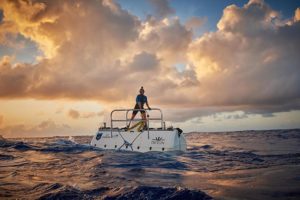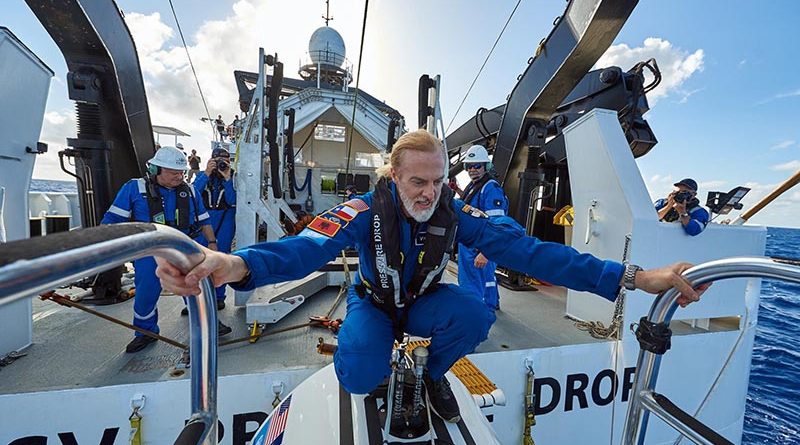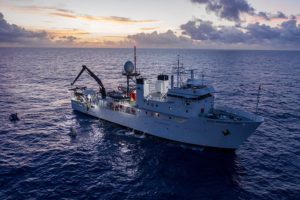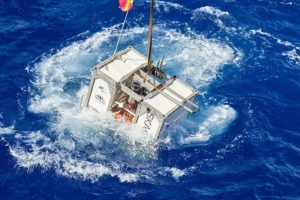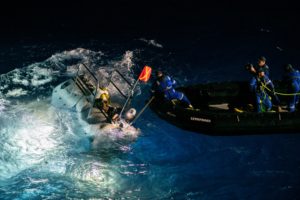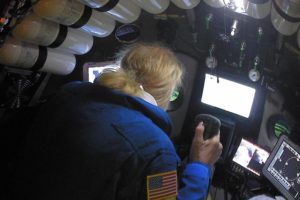‘Life Finds a Way’
Exploring unheard-of ocean depths is nothing new for St. Mark’s alumnus Victor Vescovo, who has dived to the deepest points of the Atlantic Ocean, Southern Ocean, and the Indian Ocean.
(ABOVE: Victor Vescovo and his crew prepare for his historic 35,787-foot-deep dive in the Pacific Ocean’s Mariana Trench. Courtesy photos)
But on April 28, Vescovo hit a new low, so to speak.
Vescovo and his vehicle, the DSV Limiting Factor, reached a depth of 35,853 feet in the Mariana Trench of the Pacific Ocean. The dive broke the record of 35,787 feet by movie director James Cameron, who hit the mark with his dive in 2012.
Vescovo and his team remained in the section of the trench known as Challenger Deep until May 5, exploring and collecting biological samples from an area of the Pacific Ocean nearly seven miles below the surface.
Vescovo then capped off the month of May with a commencement speech at St. Mark’s 2019 graduation.
“One would think that such a hostile place – to humans – would be devoid of life, but it wasn’t.” -Victor Vescovo
He graduated from St. Mark’s in 1984, then earned degrees from Stanford University, MIT, and Harvard before becoming an operational intelligence officer with the U.S. Navy.
The bottom of the Pacific Ocean was, surprisingly to Vescovo, teeming with life.
“Life finds a way,” he said. “Frankly, I wasn’t expecting to see as much life as I did. At the absolute bottom of the ocean – which is under 16,000 pounds per square inch of pressure, and in temperatures just above freezing – I saw translucent creatures feeding on whatever they could, and small amphipods scurrying around. One would think that such a hostile place – to humans— would be devoid of life, but it wasn’t.”
Next, on Vescovo’s list are the freezing depths of the Arctic Ocean, a dive he intends to make soon to complete the Five Deeps Expedition Challenge – a quest finished only when a diver reaches the bottom of all five of the world’s oceans.
Interestingly enough, Vescovo was inspired to see the depths of the oceans after more than 20 years of mountain climbing. In 2017, Vescovo became the 53rd person in history to complete the Explorer’s Grand Slam for climbing the seven summits – the highest mountain peaks on each continent – and skiing at both the North and South poles.
“After climbing mountains for 20 years, I thought there would be a nice symmetry in diving to the bottom of the oceans,” he said. “And no one had ever done it before, so I thought it would be a great adventure as well as a major technical and scientific achievement. Mountain climbing is in many ways more dangerous, but there is more than a little technical risk when diving down to the bottom of the ocean.”
Known as a “submersible,” DSV Limiting Factor was designed to withstand the pressures of the far-reaching ocean depths, but Vescovo said there were still some nerve-wracking moments when continuously diving as deep as he and his team did.
“When diving as frequently as we are in the places we are going, you think, ‘Maybe there is a reason no one has ever done this before,’” he said. “We constantly remark on the ship, ‘If it were easy, someone else would have done it by now.’”
